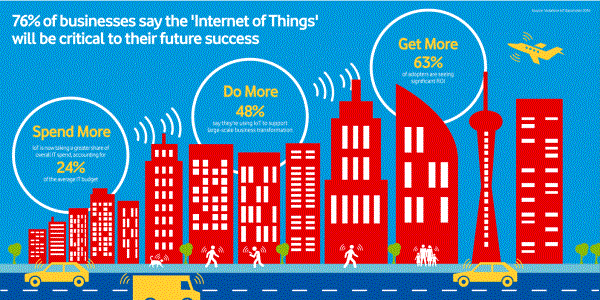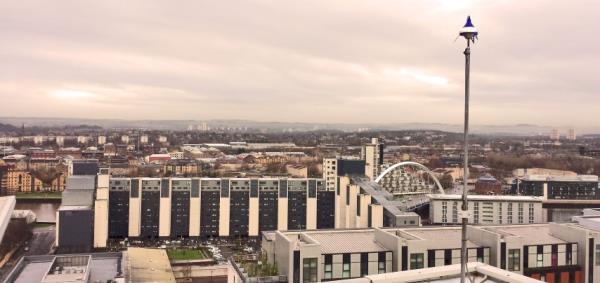18 July 2016
As more enterprises connect more ‘things’, Vodafone believes 2016 is the year IoT entered the mainstream (right click for larger view).
IoT is now mainstream and is a “new industrial revolution” that will change how people work and live forever, according to the latest research from Vodafone.
In its 2016 IoT Barometer report, the operator surveyed more than 1,096 companies across Australia, Brazil, Canada, China, Germany, India, Ireland, Italy, Japan, Netherlands, South Africa, South Korea, Spain, Turkey, UAE, UK and the US.
It found that 76 per cent of all companies interviewed believe that taking advantage of IoT technologies will be critical for the future success of any organisation.
According to the report, 89 per cent of organisations investing in IoT have increased their budgets over the last 12 months.
It said that such investment now accounts for 24 per cent of the average IT budget, putting it on a par with cloud computing or data analytics.
Vodafone Group IoT director Erik Brenneis said: “Almost half the companies surveyed across multiple countries and sectors told us they’re already planning to bring connected network intelligence to millions of devices and processes over the next two years. 2016 is the year the [IoT] entered the mainstream.”
Forty-six per cent of all companies interviewed also said they intend to develop new IoT-based products and services over the next two years.
Glasgow pioneers IoT connectivity with new LoRa network
In a separate development, it’s claimed Glasgow is paving the way for IoT thanks to a collaborative project involving Stream Technologies, Semtech, Boston Networks and CENSIS.
Working with Glasgow University, Strathclyde University and Glasgow Caledonian University, the group has installed an IoT network based on LoRAWAN technology. It covers 12km² across the city, including the commercial centre, Merchant City and the West End.
The network will enable the development and use of devices such as building and indoor environmental monitors, pollution sensors, tags for tracking valuable assets and social care devices designed to support independent living.
Glasgow is using LoRa technology in an IoT network that covers a 12 sq. km. area across the city.
The network is currently being used to monitor air quality and enhance intelligent transport systems. But as part of the next phase of its development, Semtech’s LoRa geolocation solution has been introduced to support capabilities that were not previously available.
The companies say the system now provides much lower power and a cheaper way of connecting previously isolated devices. They believe the combination of three-kilometre urban range, five-year battery life potential, and location determination without power drain, will be transformative in enabling IoT connectivity to new types of device and application.
Glasgow-based Stream Technologies, which provides the IoT platform to enable connectivity, management and billing, says businesses will be able to start up their own IoT networks with just one or two devices, and scale-up to the point where they have hundreds, or even thousands, of connected things.
Semtech said it needed a representative deployment in both urban and non-urban environments to extensively test its new LoRa geolocation hardware and software.
The semiconductor maker said it chose Glasgow because it has the ideal characteristics needed for testing low-power radio network performance.
It said the city is similar to many major metropolitan areas, includes a grid system like major US conurbations, older historic spaces, as well as a a mix of urban and extra-urban environments.
The consortium behind Glasgow’s IoT infrastructure is now also working on the installation of a similar sensor network in Inverness to monitor conditions in more rural environments.










